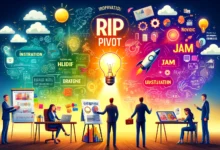Latest Articles
-
Management

The SERVQUAL Model: Measuring Service Quality by Comparing Expectations with Perception
Discover how the SERVQUAL model measures service quality by comparing customer expectations with perceptions across five key dimensions. Learn more now!
Read More » -

-

-

-

Leadership Skills
-
Accepting Delegation: Manage Confidently as Assigned

Boost your leadership skills by mastering Delegation - How to Accept Delegation…
-
Master Lafley & Martin’s 5-Step Strategy Model

Learn how to dominate your market: Master Lafley & Martin's 5-step strategy…
-
15 Leadership Styles for Introverted Success (Not Just for Extroverts!)

Forget the loud & charismatic! Discover 15 leadership styles that leverage your…
-
Empowering Current Leaders for Seamless Succession: A Practical Guide

Leadership succession planning is the process of identifying and developing potential leaders…
-
How to Empower Employees with Autonomy and Decision-Making

Learn how to empower your employees with autonomy and decision-making, and unleash…
-
Appreciating Excellence: The Power of Recognizing and Rewarding Employee Achievements

Unleash the potential of your workforce by recognizing and rewarding employee achievements.…
Interpersonal Skills
-
Apologizing Properly: The Four-Step Framework

Saying sorry isn't just about admitting fault; it's about repairing relationships and…
-
How to Use LinkedIn Effectively? Tips, Benefits, Do’s and Don’ts

You may be on LinkedIn, but are you making the most of…
-
Bounded Rationality Model of Decision Making

Learn how bounded rationality model provides a useful framework for decision-makers to…
-
Rational decision-making model – Theory, Applications, Examples

Learn how Rational decision-making model is a systematic approach to making logical…
-
Social Information Processing Theory (SIPT)

Learn how SIPT plays a significant role in social psychology today, as…
-
Bridges Transition Model

Bridges Transition Model provides a valuable framework for managing transitions and achieving…
Management
-
The SERVQUAL Model: Measuring Service Quality by Comparing Expectations with Perception

Discover how the SERVQUAL model measures service quality by comparing customer expectations…
-
Empowering Current Leaders for Seamless Succession: A Practical Guide

Leadership succession planning is the process of identifying and developing potential leaders…
-
Agile Working: Navigating the Modern Workplace

Agile Working is a powerful and multifaceted strategy that has evolved to…
-
Reverse Mentoring in the Modern Workplace

Reverse mentoring is transforming workplaces by bridging generational gaps, promoting diversity, and…
-
PRACTICE Coaching Model by Stephen Palmer

Let's focus on a particular coaching model known as the PRACTICE Coaching…
-
CLEAR Coaching Model by Peter Hawkins

The CLEAR coaching model is not just a concept; it's a powerful…